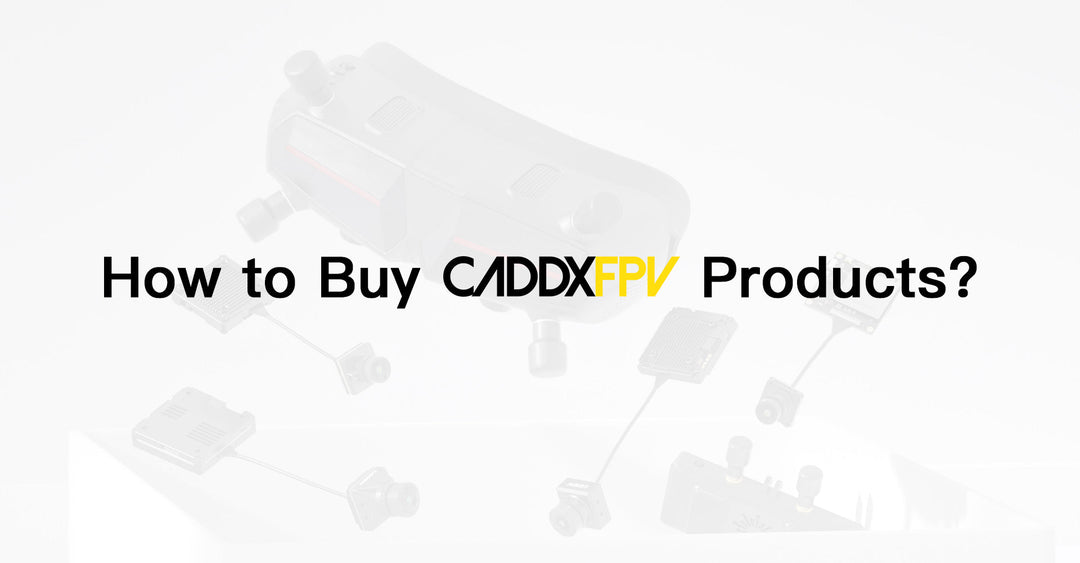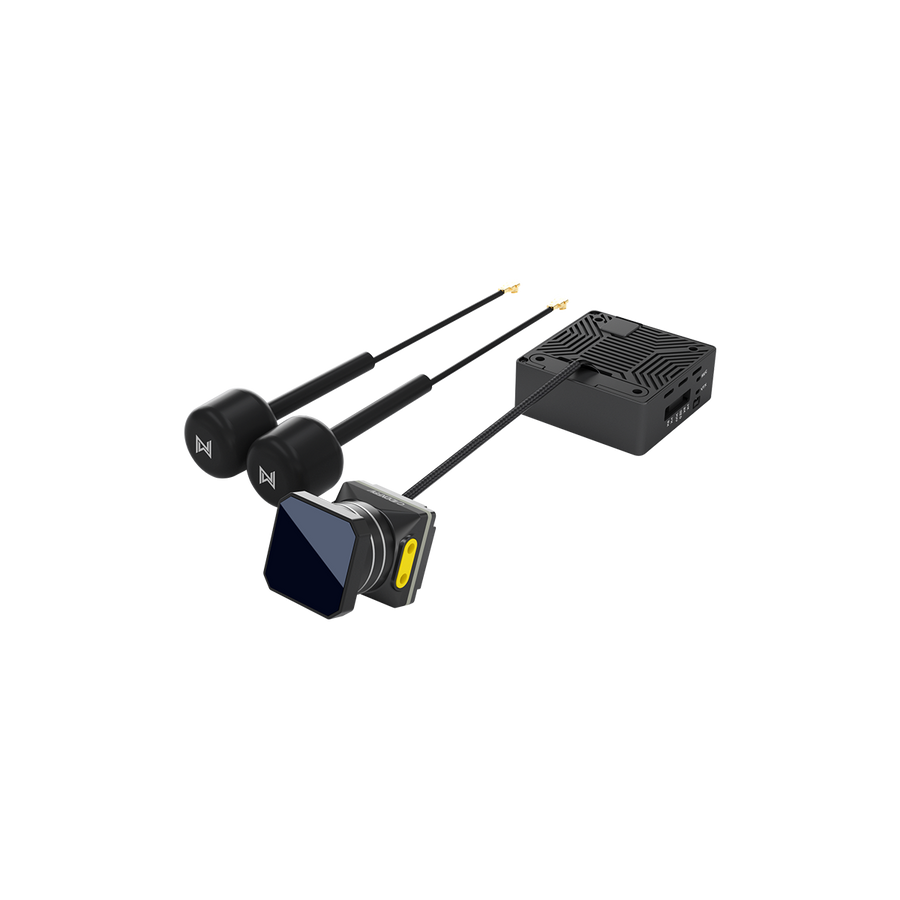The Ultimate FPV Camera Buying Guide: From Beginner to Pro
Whether you're a newcomer just entering the world of FPV (First Person View) flight or a seasoned pilot planning to upgrade your aerial gear, selecting the right FPV camera is absolutely critical. The camera is your "eye" in the sky; it directly defines your flight experience, your field of view, and the quality of your final footage.
In this guide, we'll dive deep into the core concepts of FPV cameras, the key factors you must consider before making a purchase, and recommend standout models currently commanding the market.
I. What is an FPV Camera?
An FPV camera is a lightweight camera device that transmits a real-time video signal through a video transmission system (VTX) to your FPV goggles or screen. This provides an immersive "cockpit view" flight experience.
FPV cameras fall into two main camps: Analog and Digital. These two ecosystems are completely separate and incompatible. A digital VTX system cannot use an analog camera, and vice versa.
|
|
Digital Camera |
Analog Camera |
|
Image Resolution |
HD (Mainstream is 720p / 1080p) |
Standard Definition (Unit is TVL, e.g., 600-1200TVL) |
|
Signal Type |
Digital HD video stream (Typically H.264 / H.265 encoded) |
Analog signal (PAL / NTSC standard) |
|
Core Advantages |
• Clear image with rich details • Strong anti-interference, no static • Better color performance |
• Extremely low and stable latency • High value, inexpensive parts • Mature technology, simple setup |
|
Best For |
Cinematic flying, aerial photography, and recreational flying with high image quality requirements. |
Racing, long-range flights, and freestyle flying that demands ultimate control response. |
*FPV Camera ≠ Action Camera (like GoPro): An FPV camera is born to fly, with its primary mission being the delivery of a low-latency, real-time image. An action camera is born to film, focusing on recording high-quality video. Their purposes are different and they should not be confused.
II. Factors You Must Consider When Buying an FPV Camera
1. Latency
Latency, the time delay from image capture to goggle display, is the lifeline of an FPV system's performance. Lower latency means a faster response time and more precise control.
- Analog Systems: Latency is typically under 30ms and is extremely stable, which is the core reason why competitive racers still stick with analog.
- Digital Systems: Latency varies by brand and settings. For example, the Walksnail Avatar system can achieve latency as low as 22ms. While these values are already low, their latency can have slight fluctuations.
Buying Advice: For racing and pilots chasing extreme control, latency is the top priority. For aerial photography and casual flying, the sub-40ms latency of mainstream digital systems is more than sufficient.
2. Field of View (FOV)
FOV determines the width of the picture you see while flying. It is dictated by the lens's focal length—the shorter the focal length, the wider the FOV.
- Large FOV (e.g., 155° - 165°): Offers a wide perspective, allowing you to see more of your surroundings. This helps improve situational awareness and is great for racing and freestyle in obstacle-rich environments. The downside is a "fisheye" distortion at the edges and objects appearing smaller in the distance.
- Small FOV (e.g., 130° - 150°): Has less distortion and feels more natural and immersive, making it better for cinematic-style flying or aerial photography.
There is no absolute standard for the perfect FOV; it depends on your flying style and personal preference.

3. Aspect Ratio
FPV cameras offer two primary aspect ratios: 4:3 and 16:9.
- 4:3: Provides more vertical field of view, allowing you to see more of the sky and ground simultaneously. This is helpful for judging the drone's attitude during aggressive maneuvers.
- 16:9: Offers a wider horizontal view that feels more cinematic and immersive.
The Core Principle: Ensure your camera's output aspect ratio matches the screen ratio of your FPV goggles. A mismatch will cause the image to be stretched or cropped, severely impacting the flight experience. Many modern cameras allow you to switch the aspect ratio in their settings menu.

4. Image Sensor
The sensor is the camera's "retina" and determines the foundation of its image quality. CMOS is the current standard, while CCD has been almost completely phased out.
- CCD Sensor (Historical): Was once favored for its excellent dynamic range and color science. However, due to high costs and power consumption, it has been replaced by the rapidly advancing CMOS technology.
- CMOS Sensor (Mainstream): Nearly all FPV cameras today use CMOS sensors. Thanks to technological advancements, their image quality, dynamic range, and low-light performance have completely surpassed traditional CCDs.
5. Resolution
Resolution defines the clarity of the image.
- Analog Cameras: Use "TVL" (TV Lines) as a unit, such as 1200TVL. However, no matter how high the TVL, the actual perceived clarity is limited by the bandwidth of the PAL/NTSC analog signal and can never achieve true HD.
- Digital Cameras: Use pixel resolution, like 720p or 1080p. Higher resolution allows you to see small obstacles like distant tree branches and power lines. But note: Higher is not always better. It needs to match the bandwidth of your VTX system. Excessively high resolution can lead to insufficient bitrate, causing stuttering or increased latency.

6. Wide Dynamic Range (WDR)
WDR is a crucial technology that balances the details in the brightest and darkest parts of an image. When you are flying towards the sun or quickly moving from a bright to a dark area, WDR prevents the sky from being overexposed into a white blob and ensures details in the shadows remain visible.
Today, WDR is a standard feature on all mainstream FPV cameras and is an essential safeguard for flying safely in complex lighting conditions.

7. Size and Weight
FPV cameras are typically categorized into four sizes: Standard, Mini, Micro, and Nano. This classification is based on the camera's width and mounting hole distance, which directly determines its compatibility with a drone frame.
Each frame supports a different range of camera sizes. Before purchasing, be sure to confirm that the chosen camera matches your frame. An incompatible size will not only be impossible to install but may also affect the camera's mounting angle and your field of view during flight.
III. Mainstream FPV Camera Recommendations
1. Caddx Ratel 2 - The Best Value Analog Camera
The Caddx Ratel 2 has earned widespread praise for its excellent performance since its release. It features a 165° wide-angle FOV, suitable for analog freestyle flying, and uses an imported lens with a thickened frame for enhanced crash resistance. Whether day or night, the Ratel 2 accurately reproduces colors and presents clear images, with a wide dynamic range and good contrast, making it an extremely cost-effective all-weather FPV camera.

2. Walksnail Avatar HD Pro Camera - The Digital Night Vision Benchmark
This camera is part of the Walksnail Avatar HD digital FPV system. It features a 1/1.8-inch Sony Starvis II starlight sensor, giving it exceptional night vision capabilities that can produce bright, day-like images in extremely low light. Its native 4:3 aspect ratio and 160° FOV make it a superb choice for pilots pursuing the ultimate low-light flight and an immersive experience.

3. Walksnail Moonlight Camera - 4K Recording and Night Vision in One
Also part of the Walksnail ecosystem, the Moonlight creatively combines HD FPV flight with 4K onboard recording. It not only possesses excellent starlight night vision but also supports recording up to 4K/60fps ultra-HD video. It includes a built-in gyroscope to provide data for professional stabilization with Gyroflow. For pilots who want both an HD FPV feed and GoPro-level recording quality without adding the weight of a separate action camera, the Moonlight is the ideal "All-in-One" solution.

IV. Conclusion
Choosing the right FPV camera is, in essence, about defining your primary flight objective. Are you chasing the ultimate response for racing, cinematic smoothness for filming, or the endless darkness of night exploration?
Your camera is your cockpit. Choose one that perfectly syncs with your vision for flight.







Leave a comment